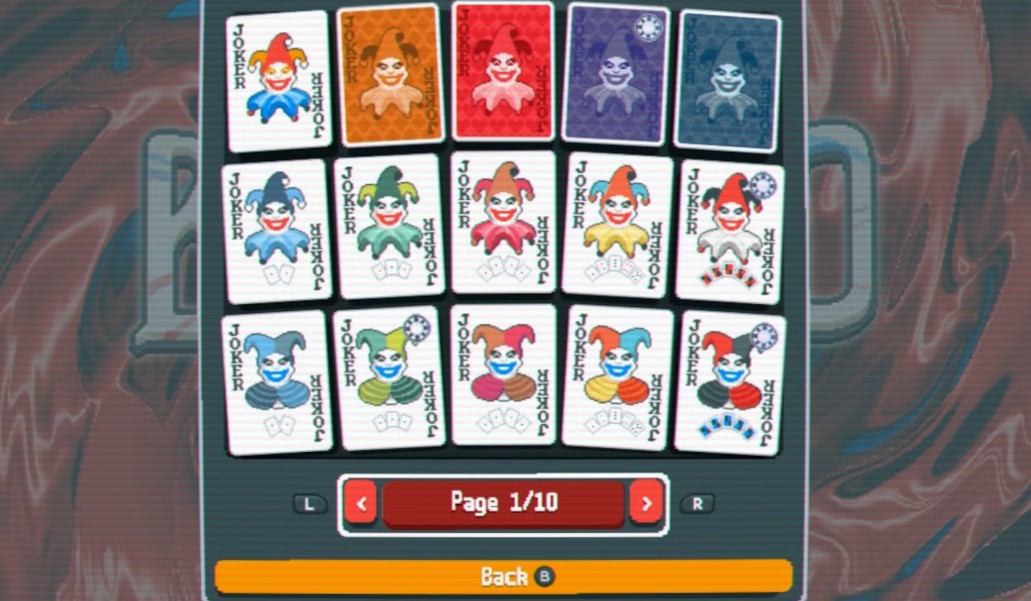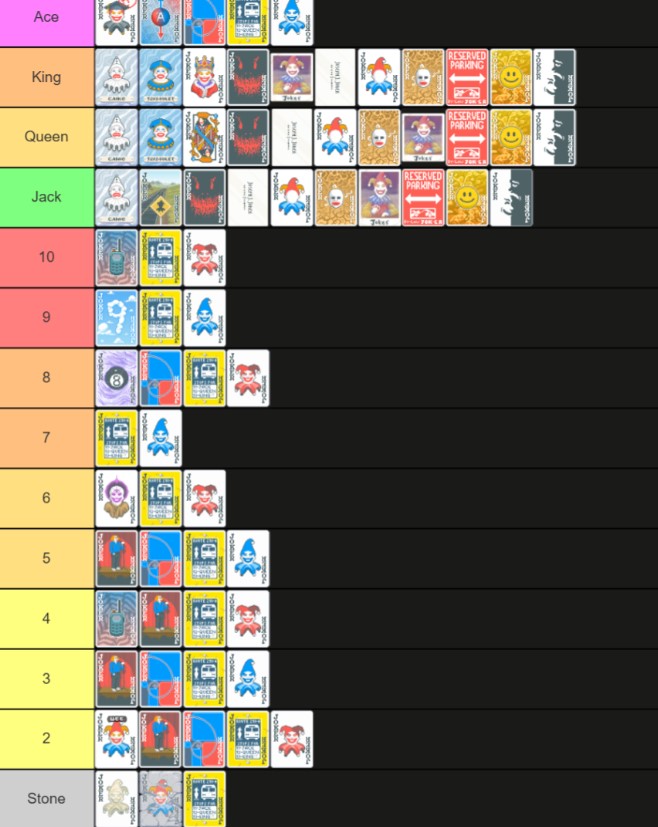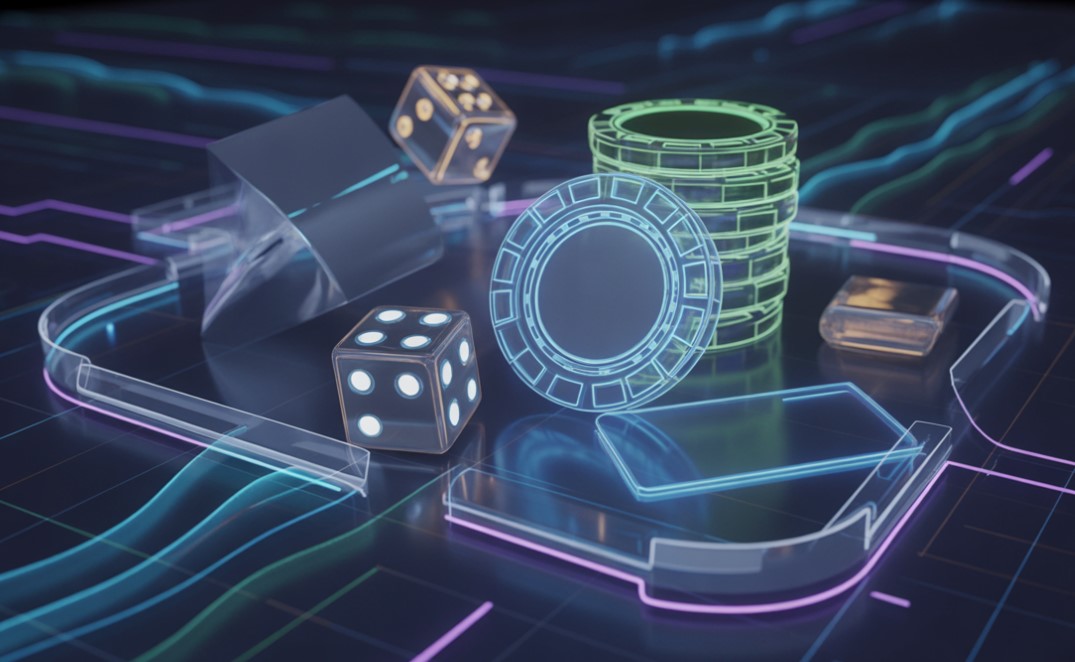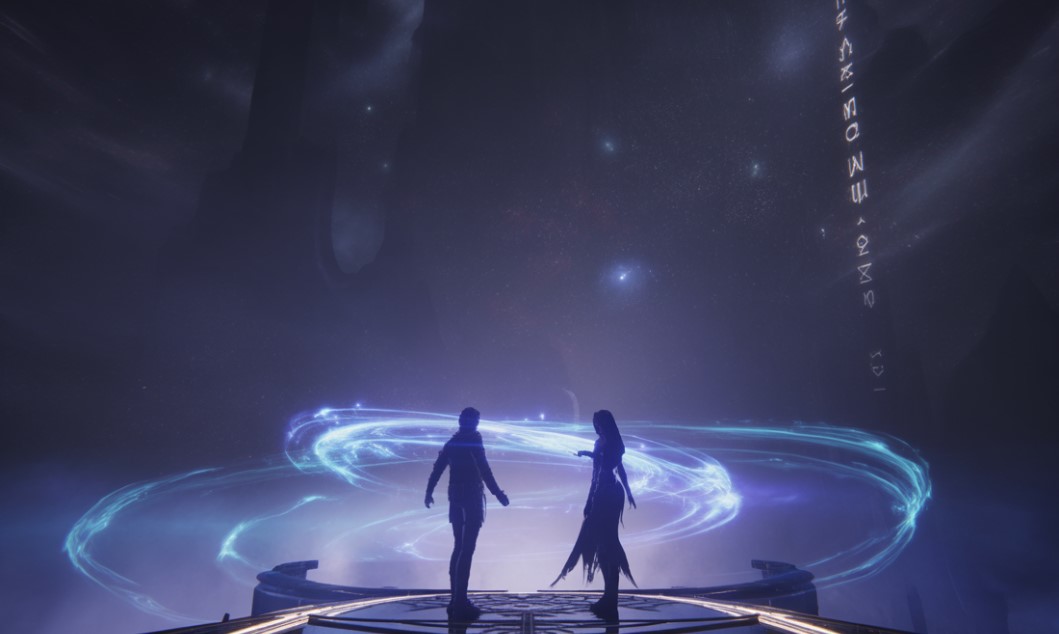Balatro Joker Tier List: The Complete Guide In 2025
Look, I’m not gonna sugarcoat it – Balatro has absolutely consumed my life since it dropped last year. This poker’s roguelike mashup is pure crack for deckbuilder fans. After hundreds of hours grinding through Gold Stakes and watching my runs crumble because I picked the wrong Joker, I’ve learned a thing or two about which cards actually matter. Let’s dive into the Balatro Joker tier list as of Joker.
The game’s sitting pretty at over 5 million copies sold worldwide, and for good reason. It’s that perfect storm of “just one more run” addiction mixed with the actual strategic depth of poker games. This combo makes you feel like a genius when you pull off a winning combo. But here’s the thing – not all Jokers are created equal, and knowing which ones to grab can mean the difference between crushing Ante 8 or watching your dreams die to some BS boss blind.
So let’s dive deep into what makes Balatro tick, break down every Joker role you need to understand, and give you the definitive tier list that’ll actually help you win runs. No BS, just real talk from someone who’s been in the trenches.
What the Hell Are Jokers Anyway?
Before we get into the rankings, let’s establish the fundamentals. Jokers are the secret sauce in Balatro – special cards that sit in dedicated slots (usually five, but that can change) and provide unique effects that completely alter how you play. Unlike your regular playing cards, Jokers don’t get shuffled into your deck. Instead, you buy them from shops, find them through special means, or occasionally get blessed by RNG gods through spectral cards.
The game currently has 150 total Jokers spread across four rarity tiers:
- Common (61 cards).
- Uncommon (64 cards).
- Rare (20 cards).
- Legendary (5 cards).
You start with 105 unlocked, and the remaining 45 require you to complete specific challenges. Some Legendary Jokers can only be obtained through The Soul spectral card, making them true unicorns in your collection.
What makes this system brilliant is that Jokers can also roll with special editions – Foil, Holographic, Polychrome, or the ultra-rare Negative. These editions add extra juice to already powerful cards, potentially turning a B-tier Joker into a run-winner.

Understanding Joker Roles Before Choosing the Best Balatro Joker Tier List
Just like you wouldn’t build a deck in Magic: The Gathering without understanding mana curves, you can’t succeed in Balatro without grasping Joker roles. Think of these as the essential building blocks for any winning strategy:
- Economy Jokers keep your wallet fat and your options open. Cards like Golden Joker earn you passive income at the end of rounds, while others like Egg generate free Jokers. In the early game (Antes 1-3), economy Jokers are absolutely clutch for affording planet packs and tarot cards. You’ll typically want to sell these off by mid-game once you’ve built up your bankroll, but they’re the foundation that lets you pivot into stronger strategies.
- Scaling Jokers are your long-term investment portfolio. These bad boys get stronger as the run progresses through various triggers – playing specific hands, skipping blinds, adding cards to your deck, or clearing boss blinds. Cards like Throwback gain X0.25 Mult per blind skipped, meaning if you’re smart about your skips, you’re looking at X4 Mult by Ante 8. That’s absolutely bonkers. Constellation, Hologram, and Space Joker all fall into this category, and grabbing one early can single-handedly carry your run.
- Mult and Chip Jokers are your bread and butter scorers. Mult Jokers add to your multiplier (obviously), while Chip Jokers boost your base score. Early game, you absolutely need at least one of each to survive. Cards like Scary Face give solid chip boosts when you score face cards, while Fortune Teller scales your Mult based on tarot cards used. The key distinction here is between flat bonuses (Joker gives +4 Mult unconditionally) and conditional bonuses that require specific setups.
- XMult Jokers are where the real magic happens. These multiply your score rather than adding to it, which means exponential growth when you stack them properly. Cards like Baron give X1.5 Mult for each King held in hand, while Cavendish offers a flat X3 with minimal downside. You absolutely need XMult to clear Ante 8 on Gold Stakes – there’s no way around it. The math just doesn’t work otherwise.
- Utility and Effect Jokers round out your toolkit with game-altering abilities. Blueprint and Brainstorm copy other Jokers’ effects, essentially doubling your power. Four Fingers lets you make Straights and Flushes with only four cards. These Jokers don’t directly score points but enable strategies that would otherwise be impossible.
The God Balatro Joker Tier List: S+ Jokers That Win Runs
Alright, let’s talk about the cream of the crop – the Jokers that make you audibly say “oh hell yes” when they show up in the shop:
- Blueprint and Brainstorm deserve their own paragraph because they’re just that good. Blueprint copies the Joker to its right, while Brainstorm copies the leftmost Joker. The ability to effectively double your best Joker’s effect is insane, but the real galaxy-brain plays come from repositioning them between hands. Copy your economy Joker before the ante, move it to your scaling Joker during early hands, then shift it to your XMult monster for the finishing blow. When you run both together, things get genuinely stupid in the best way possible.
- Cavendish is the legendary banana everyone’s hunting for, and for good reason – X3 Mult with only a 0.001% chance to destroy itself at round-end. That’s basically a free XMult Joker with zero real downside. You can only get it after its weaker cousin Gros Michel gets destroyed, but once you have it, it’s staying in your lineup until the victory screen.
- Throwback is quietly one of the most busted cards in the game. X0.25 Mult per blind skipped means X0.5 per Ante if you’re skipping both small and big blinds. By Ante 8, you’re sitting on X4 Mult from a single card. Stack a Polychrome edition on this bad boy and you’re approaching game-breaking territory. The key is knowing when skipping makes sense – you need to be confident your current build can handle the boss blind without the extra resources from clearing previous blinds.
- Mime turns your entire hand into a scoring machine. When paired with Steel cards, each card in your hand retriggers, effectively doubling (or more) your scoring potential. This synergizes disgustingly well with Baron builds where you’re holding nothing but Kings, or with any strategy that relies on held-in-hand effects.
The Elite: A-Tier Jokers You Always Consider
These Jokers won’t always win the run solo, but they’re consistently strong enough to seriously consider whenever they appear:
- Baron creates one of the most powerful synergies in the game when paired with Mime. Each King held in hand gives X1.5 Mult, and with Mime, that effectively becomes X5 or more per King. Deck thinning strategies combined with Baron can produce scores in the millions. The problem? You need to commit hard to the strategy and draw into enough Kings, which makes it somewhat fragile.
- Sock and Buskin retriggers all face cards, which doesn’t sound that impressive until you realize how many powerful effects trigger on scored cards. Pair this with any “when scored” Joker like Wee Joker or Triboulet, and you’re stacking effects at double speed.
- Hiker gains permanent Chips on every played card, and here’s the kicker – those Chips persist even after you sell Hiker. This makes it an incredible value in small deck strategies or with the Abandoned Deck, where you’re cycling through cards frequently. Grab it early, let it power up your deck, then sell it for a better scorer once your cards are juiced.
- Space Joker is the definition of low-maintenance scaling. Just play hands and watch it grow. X0.1 Mult per hand might not sound like much, but over a 30+ hand run, you’re looking at X3 or X4 Mult with zero effort required.
The Solid Performers: B-Tier Jokers
B-tier is where most of your runs actually live. These are the Jokers that keep you alive while you hunt for S-tier upgrades:
- Supernova adds Mult equal to the number of times you’ve played the current hand type. It’s simple, effective, and works with any strategy since you’re naturally going to focus on one or two hand types anyway. Not flashy, but gets the job done.
- Raised Fist gives flat Mult based on your worst held card’s value. Pair this with deck thinning and you’ve got a reliable Mult source that requires zero thought to activate.
- The Duo/Trio/Family series provides XMult bonuses for specific hand types. The Duo gives X2 Mult for pairs, which sounds weak until you realize pairs are the easiest hand to make consistently. These Jokers are solid safety nets that keep your run alive when better options haven’t shown up yet.
- Hologram gains X0.25 Mult whenever you add a card to your deck. With standard packs appearing regularly in shops, this scales naturally without forcing you to play differently. It’s the lazy person’s scaling Joker, and I mean that as a compliment.
The Specialists: C-Tier Jokers With Niche Uses
C-tier Jokers aren’t bad – they’re just situational. Sometimes they’re exactly what your build needs, other times they’re shop reroll fodder:
- Burnt Joker permanently upgrades your High Card hand while discarding a random card each round. This creates interesting risk-reward scenarios, especially when combined with Blueprint to double the level gains. The problem is that High Card strategies are inherently weaker than other hand types, limiting their ceiling.
- Loyalty Card provides X4 Mult every six hands played. When it’s processed, it’s great. The other five hands? You’re basically running with one fewer Joker. Inconsistency is the killer here – you need reliable power, not a slot machine.
- Four Fingers lets you make Straights and Flushes with four cards instead of five. Sounds great on paper, but four-card hands score fewer points, and you’re using a Joker slot to make hands easier rather than stronger. Only consider this if you’re already struggling to form these hands consistently.
The Bottom Feeders: D and F-Tier Jokers to Avoid
Let’s be real – some Jokers are just bad. Either their effects are too weak, too situational, or actively harmful to most strategies:
- Séance creates a random Spectral card if you make a Straight Flush. Here’s the problem: Straight Flushes are the hardest hand to make in Balatro, requiring specific card combinations that rarely line up naturally. The payoff doesn’t justify the effort.
- The Idol could theoretically be strong, providing X2 Mult per card of a specific rank in your deck. But in practice, reducing your deck to only Aces (or whatever rank) is incredibly difficult and leaves you vulnerable. It’s a trap for new players who don’t understand how important deck flexibility is.
- Stone Joker gains Chips when you have exactly one enhanced card. This is so restrictive and the payoff so weak that there’s rarely a reason to take it over literally any other chip source.
How Do Balatro Joker Roles Shift Through the Game?
Understanding when to pivot is crucial for high-level play. Your Joker lineup should evolve as you progress through Antes:
- Antes 1-3 (Early Game). Focus on the economy and basic scoring. You need money to roll for better Jokers and enough firepower to clear blinds consistently. One chip Joker, one Mult Joker, and one economy Joker is the classic starter pack. Don’t sleep on simple cards like Joker (+4 Mult) – it literally doubles your score on common hands at this stage.
- Antes 4-6 (Mid Game). This is crunch time. You should be identifying your primary hand type and picking up scaling Jokers that support it. Start replacing economic Jokers unless they’re still generating serious value. Begin hunting for your first XMult Joker because you’ll absolutely need it soon. Keep your money above $25 for passive interest income.
- Antes 7-8 (Late Game). XMult becomes mandatory. If you don’t have at least one strong XMult effect, you’re not beating these Antes on Gold Stakes – the math literally doesn’t support it. Sell underperforming Jokers ruthlessly to make room for power picks. This is where synergies become critical – a single Baron/Mime combo will massively outperform five mediocre Jokers working independently.
The Meta in 2025: What’s Changed in the Standard Balatro Joker Tier List
Now here’s where things get interesting. The Balatro community was expecting the massive 1.1 update to drop sometime in 2025, but developer LocalThunk announced in September that the update won’t make the 2025 deadline. As a hobbyist developer, he’s prioritizing quality over speed, working at a sustainable pace rather than crunching.
What we know about the upcoming update: it’ll include new Jokers, a reworked Matador Joker (which honestly needs it – that card’s always been weird), and changes to Blue Stake difficulty. There were also hints about Wild Card buffs. The update will be completely free when it eventually drops, which is awesome for a game that’s already given us hundreds of hours of content.
Without new balance patches landing, the meta’s been pretty stable. The S-tier Jokers haven’t changed – Blueprint, Brainstorm, Cavendish, and Throwback remain the cream of the crop. Some community discussion has emerged around whether certain XMult Jokers are overtuned, particularly how easy it is to stack multiple XMult effects for exponential growth.
The community’s also been debating stake difficulty, particularly Purple Stake and above. These difficulties simply scale required scores up without adding interesting counterplay, which many players find frustrating. It becomes less about creative deckbuilding and more about hunting for the same handful of powerful synergies every run.

Balatro Joker Tier List – What is Next?
The game’s already achieved way more success than anyone expected. From indie darling to Game of the Year nominee, Balatro proved that clever design beats AAA budget every time. The fact that it’s sold 5 million copies without any major content updates is nuts.
When the 1.1 update finally drops (likely 2026 at this point), the meta will definitely shift. New Jokers mean new synergies, and the Matador rework could potentially make that card actually playable. Blue Stake changes might make higher difficulties more accessible without feeling like artificial difficulty.
The community’s been incredible too – sharing strategies, creating tier lists, and discovering synergies the developer probably never intended. That’s the sign of a truly great roguelike – when the emergent gameplay exceeds the designed systems.
FAQ
What’s the best starting Joker for new players?
Stick with basic +Mult Jokers like Joker or Greedy Joker early on. They’re simple, consistent, and teach you fundamental scoring without overwhelming complexity. Once comfortable, experiment with scaling Jokers like Space Joker or Hologram for long-term power growth throughout your runs.
How many Jokers should I have at each Ante?
Aim for 2-3 Jokers by Ante 3, 4-5 by Ante 5, and maintain a full lineup of 5 quality Jokers by Ante 7. Early game, leave slots open for flexibility. Late game, every slot matters for maximum scoring potential against increasingly difficult blinds.
What’s better: flat Mult or XMult Jokers?
A: XMult becomes mandatory for Ante 8 and beyond because it multiplies your total score exponentially. Flat Mult is stronger early game when scores are low, but XMult scales infinitely. Ideally, you want both working together for maximum damage output during crucial hands.
Can I win Gold Stake without legendary Jokers?
Legendary Jokers help, but Blueprint, Brainstorm, Baron, and Throwback are all uncommon or rare. Gold Stake is more about smart economic management, hand leveling, and synergy building than luck. Skilled players consistently win with purely common and uncommon Jokers.
When should I sell my economy Jokers?
Sell them when passive interest income ($5 per round at $25+ balance) exceeds their generation, usually around Ante 4-5. Keep Golden Ticket longer if it’s generating $6+ per round. Economy Jokers are investments, not permanent fixtures-cash out when returns diminish.
Conclusion
Balatro’s genius lies in its simplicity. Poker hands are universally understood, but layering roguelike progression and deckbuilding strategy create this perfect complexity cocktail. The Joker system gives you enough variables to make every run feel different while maintaining enough consistency that skill actually matters.
After hundreds of hours, I’m still finding new synergies and strategies. That’s the mark of a perfectly tuned game system. Yeah, some Jokers are clearly better than others, but the randomness ensures you can’t just force the same build every run. You have to adapt, improvise, and sometimes make desperate plays work through sheer force of will.
Whether you’re grinding Gold Stakes or just vibing in lower difficulties, understanding Joker roles and tier rankings will elevate your gameplay. But remember – tier lists are guidelines, not gospel. Sometimes the “bad” Joker is exactly what your specific build needs, and that’s beautiful.
Loved this dive into Balatro’s Joker mechanics? Fuel the fire: share it across your social feeds and bookmark it for endless inspiration. Eyeing a creative or biz collab? DM the BandurArt team – we’re game!




